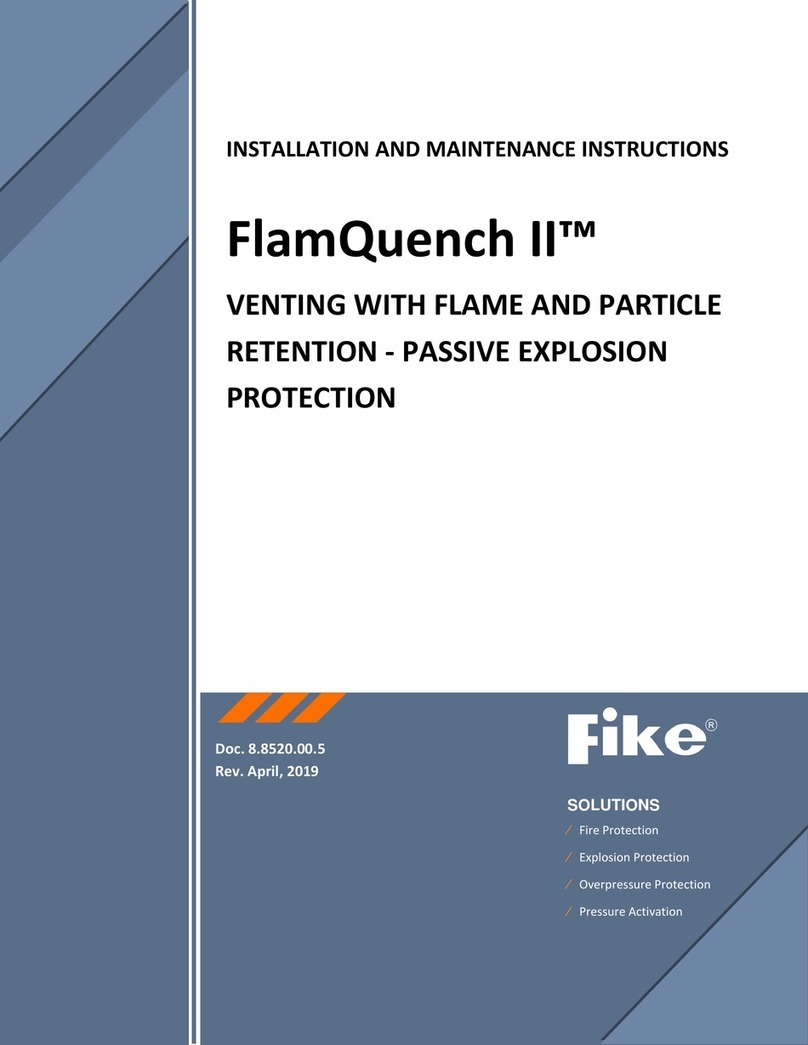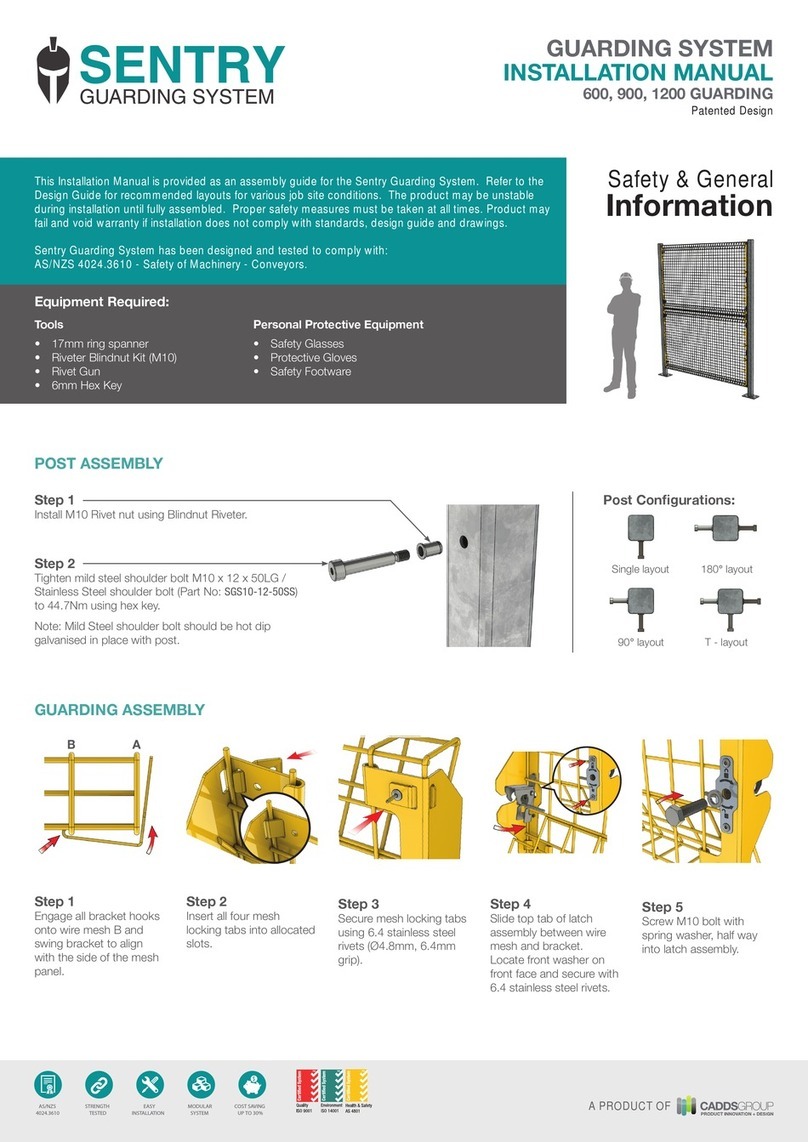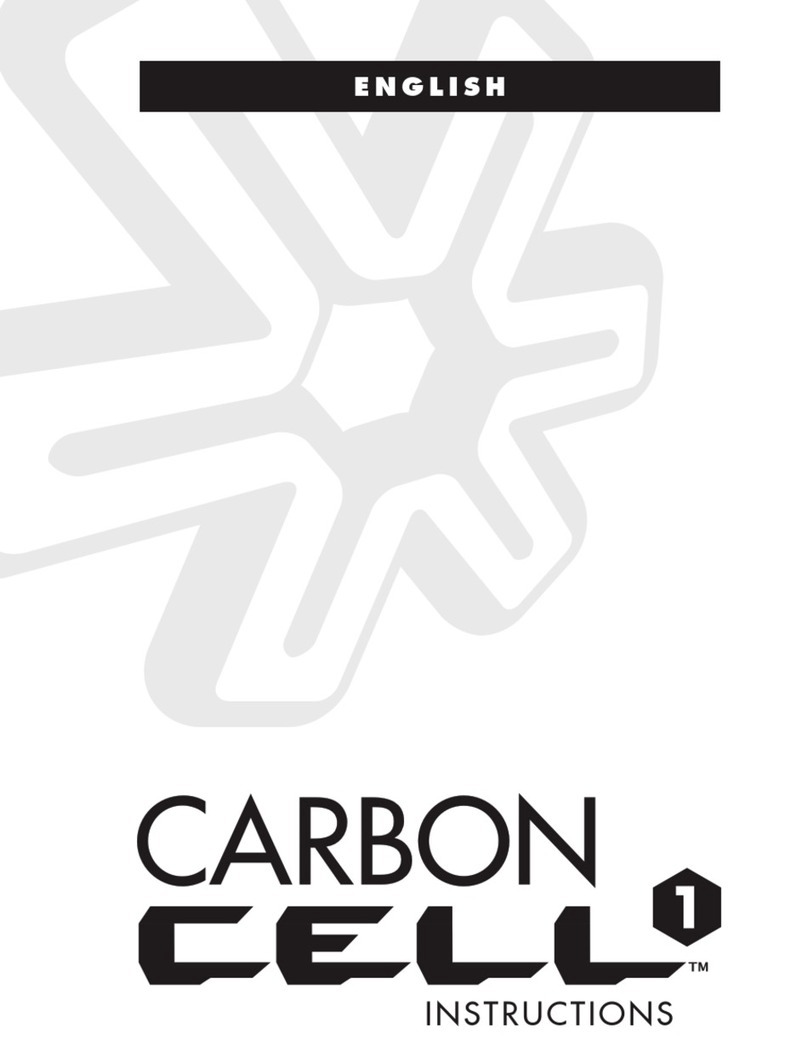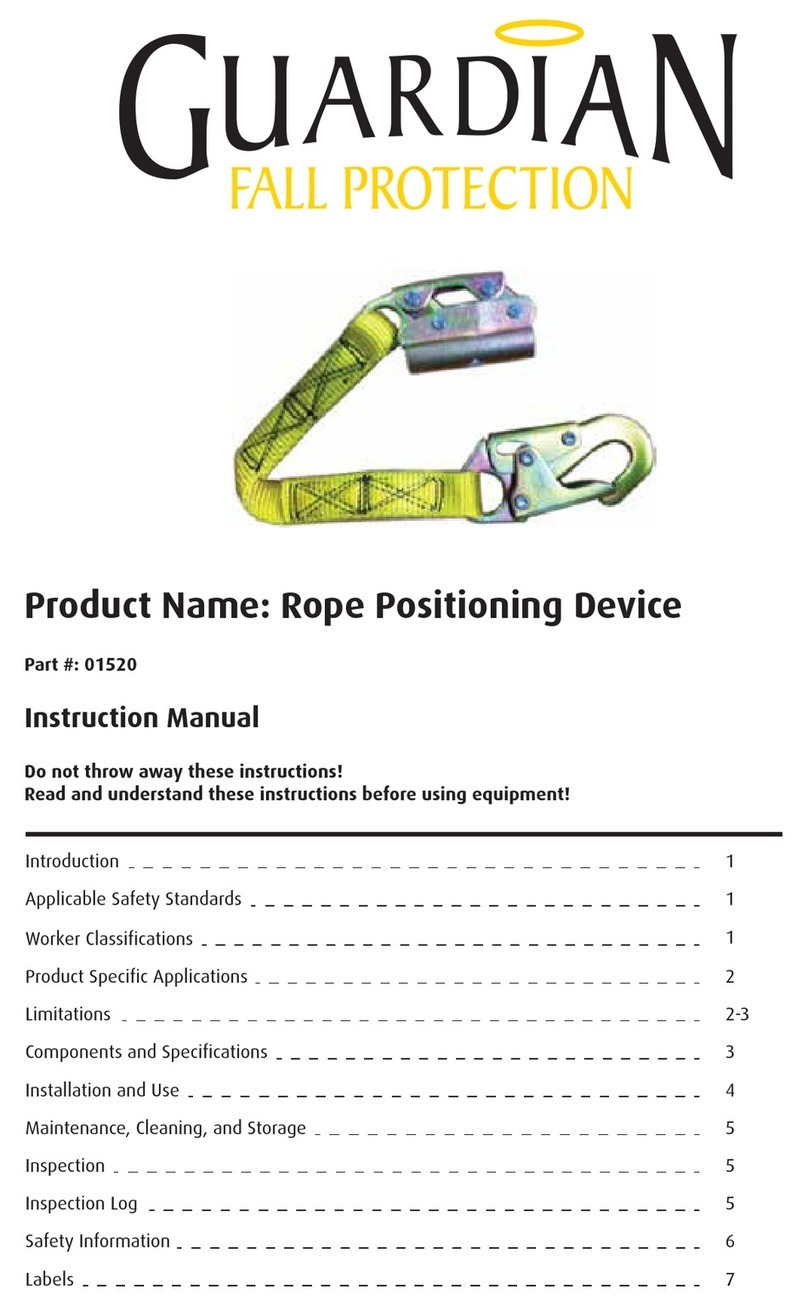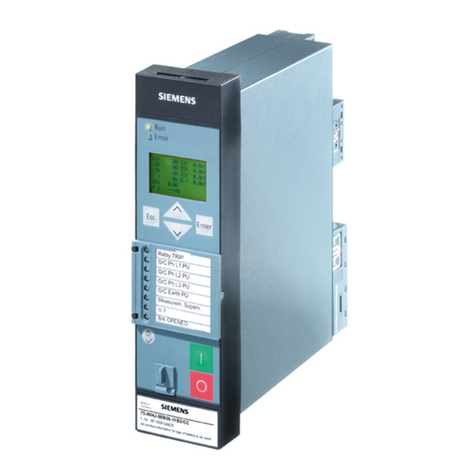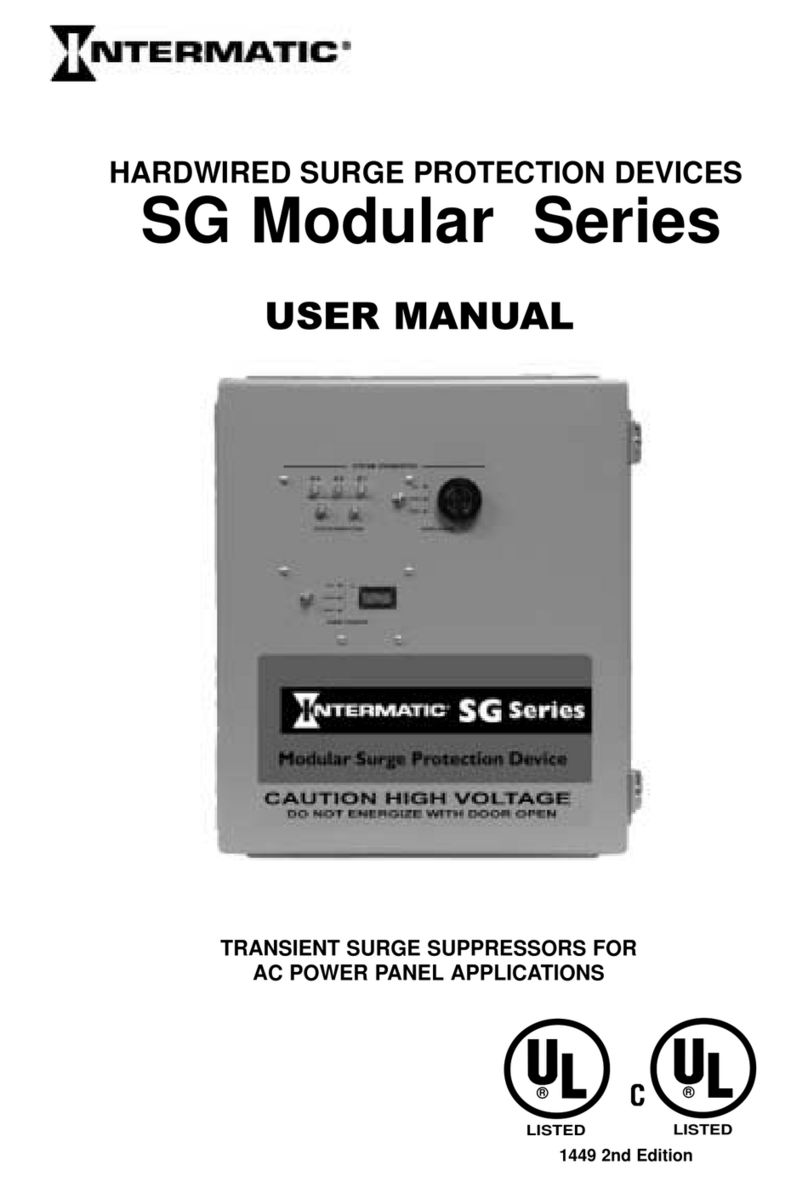Fike Ventex ESI-E User manual

Fire Protection
Explosion Protection
Overpressure Protection
Pressure Activation
ASSEMBLY AND OPERATING INSTRUCTIONS
Explosion Barrier
Ventex ESI-E/D/C
DN100 –500 Type 6
EXPLOSION PROTECTION
Doc. 8.8701.00.2
Rev. June, 2017

COPYRIGHT INFORMATION
© Copyright 2017, Fike Corporation. All rights reserved. Printed in Europe.
This document may not be reproduced, in whole or in part, by any means without the prior written consent of Fike. All
Fike documentation and hardware are copyrighted with all rights reserved.
TRADEMARKS
Fikeis a registered trademark of Fike. All other trademarks, trade names or company names referenced herein are the
property of their respective owners.
ERRORS AND OMISSIONS
While every precaution has been taken during the preparation of this document to ensure the accuracy of its content,
Fike assumes no responsibility whatsoever for errors or omissions.
Fike reserves the right to change product designs or specifications without obligation and without further notice in
accordance with our policy of continuing product and system improvement.
READER QUESTIONS AND RESPONSES
If you have any questions regarding the information contained in this document, or if you have any other enquiries
regarding Fike products, please call Fike Europe Product Support at 0032 14 21 00 31.
Fike encourages input from our distributors and end users on how we can improve this manual and even the product
itself. Please direct all calls of this nature to Fike Europe Product Support at 0032 14 21 00 31. Any communication
received becomes the property of Fike.
TERMS AND CONDITIONS OF SALE
Because of the many and varied circumstances and extreme conditions under which Fike’s products are used, and
because Fike has no control over this actual use, Fike makes no warranties based on the contents of this document. FIKE
MAKES NO IMPLIED WARRANTIES OF MERCHANTABILITY OR FITNESS FOR A SPECIFIC PURPOSE. Refer to
www.fike.com/terms-conditions for Fike’s full TERMS AND CONDITIONS OF SALE.
TERMS OF USE
Do not alter, modify, copy, or otherwise misappropriate any Fike product, whether in whole or in part. Fike assumes no
responsibility for any losses incurred by you or third parties arising from such alteration,modification, copy or otherwise
misappropriation of Fike products.
Do not use any Fike products for any application for which it is not intended. Fike shall not be in any way liable for any
damages or losses incurred by you or third parties arising from the use of any Fike product for which the product is not
intended by Fike.
You should install and use the Fike products described in this document within the range specified by Fike, especially
with respect to the product application, maximum ratings, operating supply voltage range, installation and other
product characteristics. Fike shall have no liability for malfunctions or damages arising out of the use of Fike products
beyond such specified ranges.
You should install and use the Fike products described in this document in compliance with all applicable laws,
standards, and regulations in the country of installation. Fike assumes no liability for damages or losses occurring as a
result of your noncompliance with regionally applicable laws and regulations.
It is the responsibility of the buyer or distributor of Fike products, who distributes, disposes of, or otherwise places the
product with a third party, to notify such third party in advance of the contents and conditions set forthin this document.
Fike assumes no responsibility for any losses incurred by you or third parties as a result of unauthorised use of Fike
products.
QUALITY NOTICE
Fike has maintained ISO 9001 certification since 1996. Prior to shipment, we thoroughly test our products and review
our documentation to assure the highest quality in all respects.

Doc. P/N 8.8701.00.2
Rev. June, 2017
PAGE / 1
REVISION HISTORY
ORIGINAL RELEASE DATE: ....................................................................................................................................June, 2017
REVISION /DESCRIPTION OF CHANGE REVISION DATE

PAGE / 2
Doc. P/N 8.8701.00.2
Rev. June, 2017
TABLE OF CONTENTS
Section Page No.
1. INTRODUCTION....................................................................................................................................................3
2. APPLICATION AND FUNCTION...............................................................................................................................3
3. DUST LOADING..................................................................................................................................................... 4
4. PREPARATION FOR INSTALLATION AND OPERATION.............................................................................................4
5. INSTALLATION......................................................................................................................................................4
6. MAINTENANCE AND TEST.....................................................................................................................................5
7. TECHNICAL DATA .................................................................................................................................................6

Doc. P/N 8.8701.00.2
Rev. June, 2017
PAGE / 3
These assembly and operating instructions apply to the Explosion Barrier Valves VENTEX-ESI-E, -D or –C Type 6 with
nominal size DN100-500 mm, without auxiliary energy –refer to nameplate.
Included in these instructions is a drawing of the VENTEX valve. The position numbers on the drawing match the
numbers in brackets in the instructions.
The valve may only be used for the application described in the sales agreement for the medium, the temperature, the
pressure, the installation and the nominal pipe diameter. The unpacking, installation, servicing and the commissioning
may only be carried out by trained personnel. During the normal life of the valve, approximately 15 years, the gaskets
and the general condition should be examined. This should include inspection of the housing for corrosion, function of
the locking device and the valve poppet. The valve should be serviced, at intervals dependent upon use and after each
explosion.
In operation the medium flows through the Explosion Barrier Valve VENTEX-ESI. The valve contains a valve poppet (1)
which moves freely in the direction of the explosion.
The valve poppet (1) is held in position by one or two springs (2), depending of the execution of the valve. The spring
power is designed for a maximum flow velocity of 20 m/s (optionally 25 m/s).
In case of an explosion the pressure wave propagation speed is higher than that of the flame front. Thus the pressure
causes the valve to close automatically before the flame front reaches the valve. In the closing process the valve
poppet (1) is pressed to the seal (3) and held by the catch rod (4) and the catch ring (5). The limit switches (6) signal
the position “OPEN/SHUT“.
After an explosion the valve should be inspected by the manufacturer or by trained personnel of the relevant
representing agency to ensure future operation !

PAGE / 4
Doc. P/N 8.8701.00.2
Rev. June, 2017
The valve is designed for use in pipes in which there is only a minimum dust content in the air. However, experience
has shown that under certain conditions dust in the air carried can be tolerated. In any case, before any such
installation is carried out, the written consent of the manufacturing company must be obtained.
In connection with the use of the VENTEX-ESI with a gas/air-dust mixture, the following points must be taken into
consideration:
The air speed inside the valve must be at least 12 m/s to ensure that the dust does not settle in the valve but
is carried through the valve along with the air flow.
The maximum size of a dust particle must not exceed 0,5 mm. If a dust particle exceeds this dimension, it is
possible that it might become jammed during the closing process between the valve poppet and the gasket,
with the result that closing cannot be guaranteed.
The air must be dry to ensure that no condensation appears, as otherwise there is the danger that the
condensate might bind together with the dust to form a mush compromising operation of the valve.
The maximum dust loading must not exceed the figure of 50 g/m³.
After commissioning, servicing must be carried out at short intervals (3-5 days). Once proper functioning has
been confirmed, the intervals between servicing may be extended. Any changes to the above conditions must
be taken into account during operation. The time interval must then be amended appropriately.
Preparation must be done prior to installation!
1. Retract reset knob (4), spring(s) will move valve poppet (1) to the middle position.
2. Check that valve poppet (1) moves freely.
3. Close valve manually and check proper functioning of the limit switch (6).
4. Lock (both sides of) the valve and measure gaps between valve poppet (1) and seal (3). The total gap must
not exceed 0,1 mm. If necessary, adjust catch ring (5) and then glue face to safeguard against detachment.
5. Retract reset knob (4), spring(s) will move valve poppet (1) to the middle position.
Attention: Make sure that the valve poppet is in the middle position of the valve!!
For –C type, valve will be pushed in the closed position.
6. Install the valve.
1. Attention: Keep attention on the single operation valve for the explosion direction. A wrong installed valve
cannot fulfil the function!
2. Refer to project drawings to check the distance between the potential source of explosion and the valve.

Doc. P/N 8.8701.00.2
Rev. June, 2017
PAGE / 5
3. Install the valve in horizontal/vertical position, refer to nameplate and check process/explosion direction. For
horizontal mounting, check position by means of a spirit level.
4. The counter flange and pipe on the explosion side must be designed for a minimum overpressure of 9 bar.
5. Bursting safety devices must be designed for a response pressure which ensures that the valve closes at a
response pressure of 0,1 bar.
6. During installation, care must be taken to ensure ease of access and dismantling for servicing purposes.
7. To ensure proper operation, the valve must not be placed under any tension by the connected pipework.
8. We recommend that the valve be attached to pipe connectors so as to ensure that it can be removed with no
displacement of pipework.
9. Start fan.
10. Measure differential pressure at measuring nozzle and check air flow velocity.
The maintenance frequency is dependent on the type of application. To begin with, the valves should be inspected at
short intervals. The regular maintenance schedule may then be determined based upon the experience made.
We recommend an additional annual inspection of the valves by the manufacturer or by trained personnel of the
relevant representing agency.
1. Remove the control covers (7).
2. Check seals (3) for damage, perfect adhesion to the housing and product deposits. If the seal has become
detached from the housing it must be replaced by qualified personnel.
3. Check free movement of the valve poppet (3).
4. Check valve poppet for distortion.
5. Check the housing for deposits or condensate.
6. Inspect the dust seals. If the dust seals are defective there is a risk of the inner tube being filled with dust. The
proper functioning then is no longer guaranteed. Dust seals must be replaced by qualified personnel.
7. Inspect catch rings (5) for damages.
8. Close valve manually and check the function of the limit switch (6).
9. Assessment of valve in respect of corrosion. The housing areas near the seal (3) require special attention.
10. Retract reset knob (4); spring will move valve poppet to the middle position.
Attention: Make sure that the valve poppet is in the middle position of the valve!!
For check valve in the closed position.

PAGE / 6
Doc. P/N 8.8701.00.2
Rev. June, 2017
11. Install the control covers (4).
Refer to Fike document X.2.24.01-x Ventex Valve for technical specifications.

Notes:

Fike Europe
Toekomstlaan 52
2200 Herentals, België
Tel: +32 14 210031
www.Fike.com
For a list of contact information for Fike offices around the
world, visit the Global Locations section of Fike.com
This manual suits for next models
2
Table of contents
Other Fike Protection Device manuals
Popular Protection Device manuals by other brands
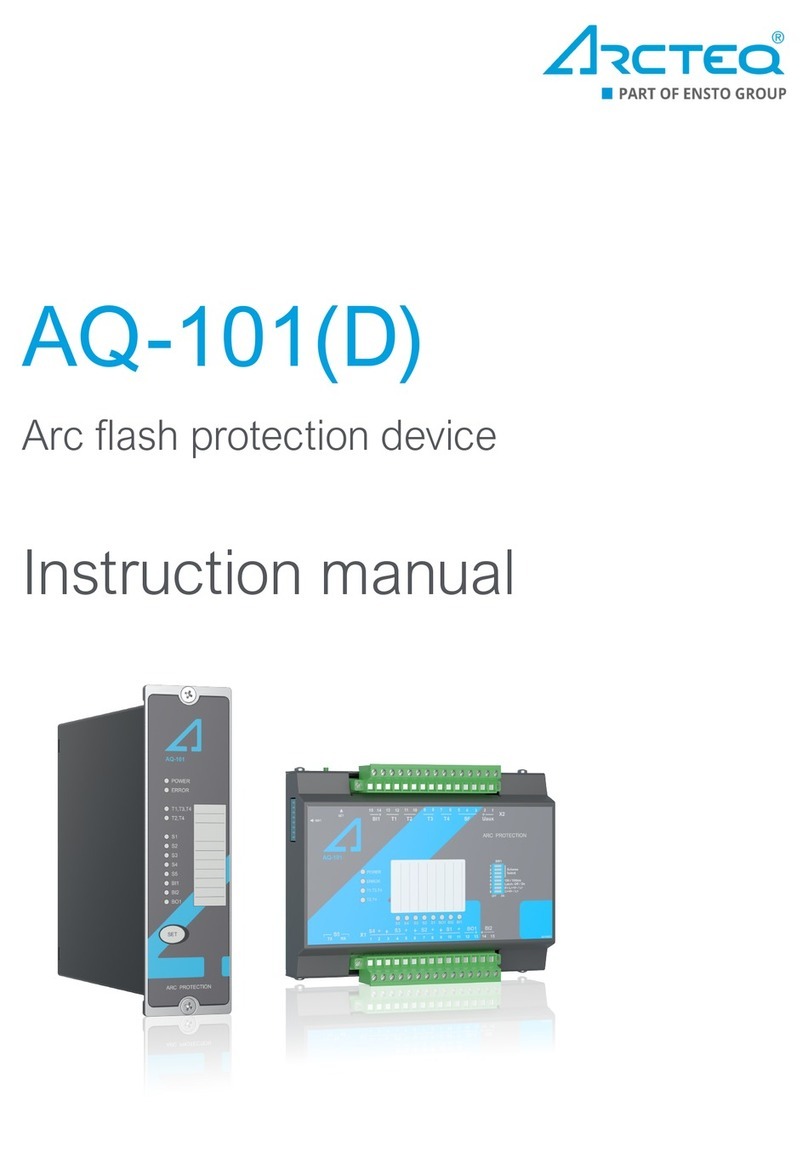
Arcteq
Arcteq AQ-101 instruction manual
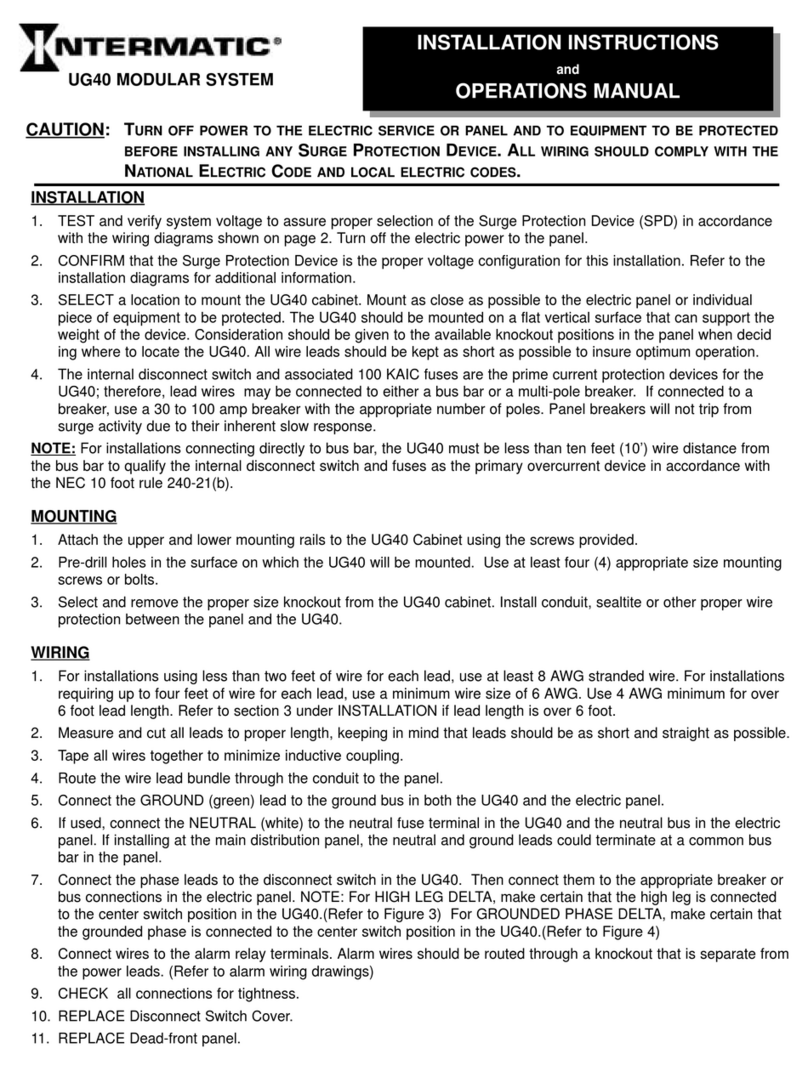
Intermatic
Intermatic UG40 Installation instructions and operating manual
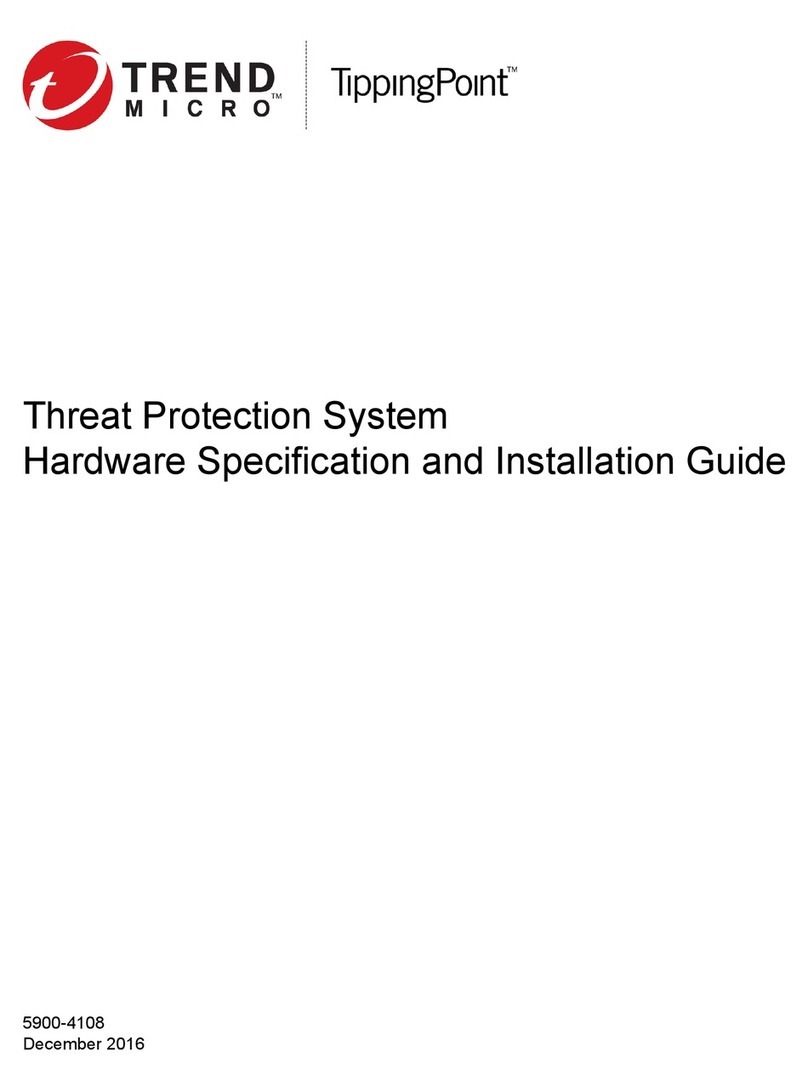
Trend Micro
Trend Micro TippingPoint 2200T Hardware Specification and Installation Guide
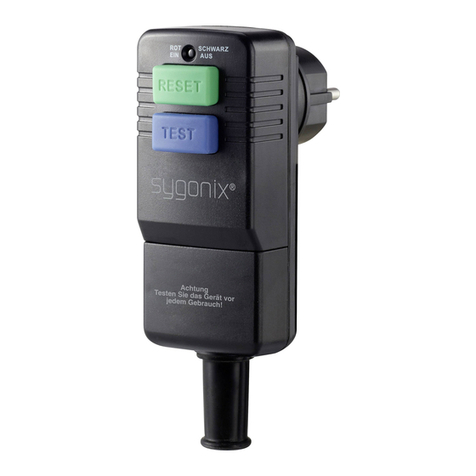
Sygonix
Sygonix SY-3779070 operating instructions
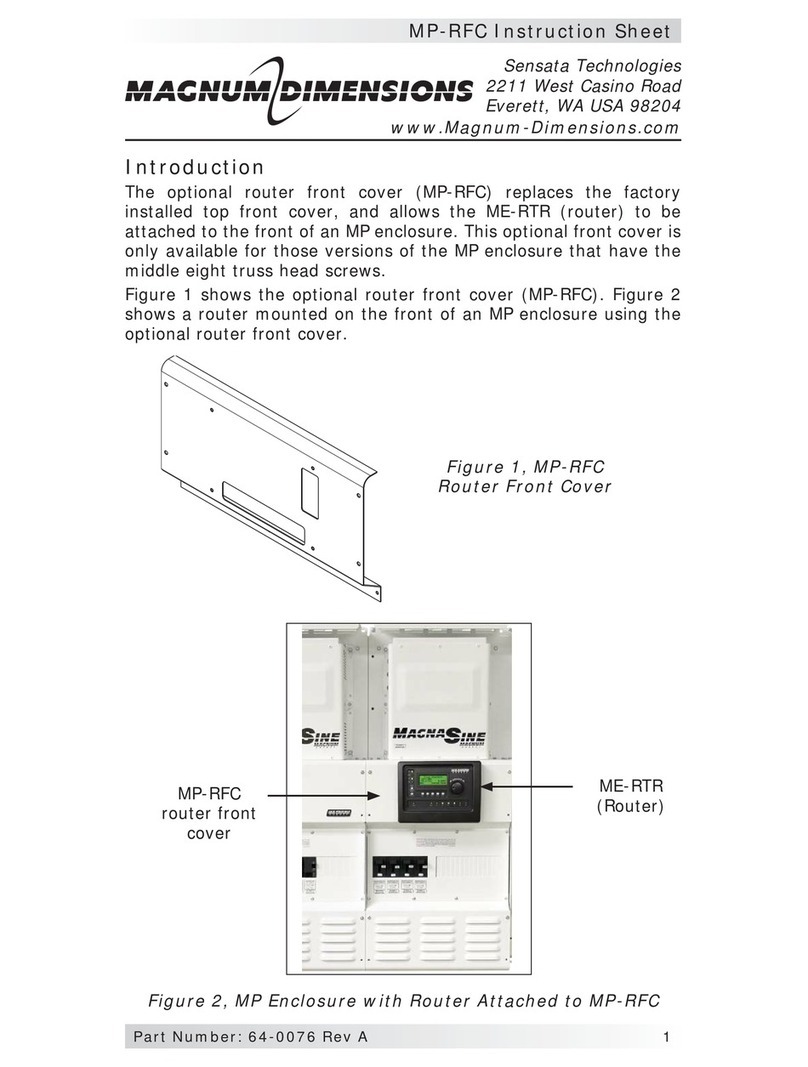
Magnum Dimensions
Magnum Dimensions MP-RFC instruction sheet

cias
cias SIOUX installation manual
